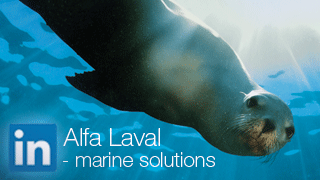![Alfalaval header 1200x400[2]](https://www.alfalaval.com/globalassets/images/industries/marine-and-transportation/marine/marine-history/alfalaval_header_1200x4002.jpg)
Together with you, we make history
The Alfa Laval story begins in Sweden in 1845 with the birth of Gustaf de Laval, who developed the first continuous centrifugal separator. That model, presented in Stockholm in the late 1870s, was a separator for cream. But it paved the way for the Alfa disc stack technology that’s part of our name, and for oil separation beginning in the early 1900s. From that point on, our history and that of the marine industry have been intertwined. Together, we’ll continue moving forward.
1917
Alfa Laval delivers an oil separator to the US Navy, which uses it to break water emulsions in lube oil on vessels driven by steam turbines. This lays the groundwork for a US service presence.
1930
Alfa Laval launches the new modern separator series – 1500, 1700 and 1900 – developed specifically for the marine industry.
1951
Sales of Alfa Laval “self-cleaning” centrifugal separators and decanter centrifuges begin.
1952
The Alfa Laval P12 plate heat exchanger (PHE) is the first PHE sold to the marine industry. The PHE is installed on the ”Markland”, a motor tanker built in Gothenburg, Sweden for a subsidiary of the Broström Group.
1954
The first freshwater generator, based on tube technology, is produced by Atlas for a Lauritzen vessel. An alternative solution with plate technology is developed by Nirex two years later. Alfa Laval will later acquire both technologies and unite them in today’s Alfa Laval AQUA solutions.
1960
Alfa Laval begins to move its production from Fleminggatan in central Stockholm to new facilities in Tumba, just outside Stockholm. Tumba continues to be Alfa Laval’s centre for separator research and development.
1970
Alfa Laval affirms its commitment to marine markets with a sales company in Greece.
1973
Alfa Laval sets up a sales company in Singapore to better serve the marine business in this part of Asia.
1979
A new sales company in Korea broadens Alfa Laval’s Asian presence.
1980
Alfa Laval presents Alcap, a game-changing separator technology it has been developing since the 1970s. Alcap uses a water transducer in the oil outlet to automatically adjust the cleaning process, which allows low-quality oils to be separated with minimal losses.
1984
The Chinese market – where Alfa Laval products have been sold since the 1950s – gets its own dedicated sales company.
1985
Alfa Laval complements its service organization by acquiring Haven Automation, a major service provider in the Asian marine market.
1988
Alfa Laval establishes a fully owned sales company in Japan, where its marine products have been sold since 1926. It inherits the marketing rights for marine equipment previously held by Nagase-Alfa, a 10-year-old joint venture between Alfa Laval AB and Nagase & Co.
1989
Alfa Laval acquires Moatti Filter, a leading supplier of filters for the lubricating oil used in crosshead and trunk piston engines.
1991
Alfa Laval is acquired by Tetra Pak, which provides packaging solutions to the food industry worldwide, and the Rausing family.
1999
Alfa Laval launches the innovative Alfa Laval S separator for oil cleaning. The SU separator modules introduced with the series would later be further simplified as a part of the Alfa Laval S and P Flex concept.
2000
Alfa Laval is bought by investment company Industri Kapital. The plan is to further develop Alfa Laval’s global leadership in separation, heat transfer and fluid handling, and to list the shares publicly within a five-year period.
2002
Alfa Laval returns to the Stockholm Stock Exchange and acquires companies such as Toftejorg Group, the world’s leading supplier of advanced tank cleaning systems.
2004
Pure Thinking becomes the framework for Alfa Laval’s development of marine environmental solutions. Focused on practical, cost-effective compliance, it paves the way for Alfa Laval PureBilge, PureVent, PureBallast, PureDry, PureSOx and PureNOx.
2006
Alfa Laval PureBallast becomes the first commercially available ballast water treatment system.
2011
Alfa Laval acquires Aalborg Industries, a world leader in boiler systems, thermal fluid systems, waste heat recovery systems and inert gas systems. The acquisition strengthens Alfa Laval’s existing global position, adding a strong product offering focused on energy efficiency. Alfa Laval PureSOx is launched the same year.
2014
Alfa Laval acquires Norwegian company Frank Mohn, a leading manufacturer of submerged pumping systems, whose unique technology strengthens Alfa Laval’s offering to the marine and offshore markets. The Alfa Laval Test & Training Centre, a ship simulation facility in Aalborg, Denmark, expands Alfa Laval’s network of training sites when it is inaugurated the same year.
2015-2016
Energy efficiency and environmental compliance continue to be major drivers for Alfa Laval, as do new fuel challenges – the focus of a major expansion of the Alfa Laval Test & Training Centre. Innovations are introduced at a greater pace than ever before.
2017
We celebrate hundred years since we sold our first separator to the marine industry.

Gustaf de Laval (1875-1915)
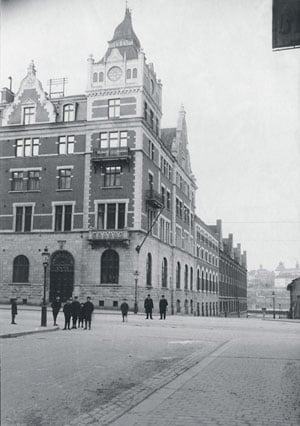
Fleminggatan in Stockholm early 1900.
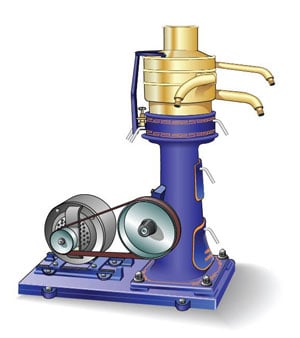
The oil purifier AVMO from 1918, a modified dairy separator with a capacity of 1500 l/h.
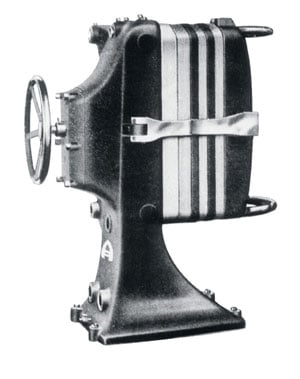
One of Alfa Laval's first plate heat exchangers.
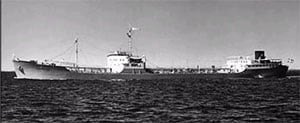
The Alfa Laval P12 plate heat exchanger was the first PHE sold to the marine industry. It was installed 1952 on the ”M/S Markland”.

